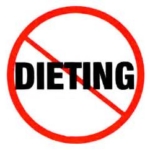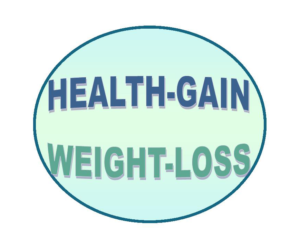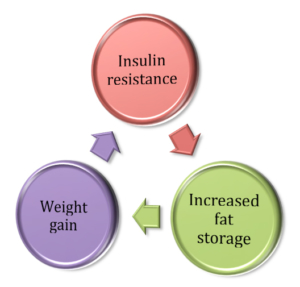 If you struggle with your weight, you are not alone. Already 70 percent of Americans over the age of fifteen are overweight or obese while rates continue to escalate. According to a 2016 report released by the CDC (Center for Disease Control and Prevention), the average American is more than 15 pounds heavier than they were 20 years ago. And half of all overweight people are considered obese, meaning they exceed their ideal weight by more than thirty pounds. Of particular concern is the fact that today’s generation of children is projected to become the most obese adults in the history of our country.
If you struggle with your weight, you are not alone. Already 70 percent of Americans over the age of fifteen are overweight or obese while rates continue to escalate. According to a 2016 report released by the CDC (Center for Disease Control and Prevention), the average American is more than 15 pounds heavier than they were 20 years ago. And half of all overweight people are considered obese, meaning they exceed their ideal weight by more than thirty pounds. Of particular concern is the fact that today’s generation of children is projected to become the most obese adults in the history of our country.
Health Risk Realities
The increased risks for life-threatening health problems that accompany this exploding epidemic are enormous. More than 20 different diseases and conditions are directly attributed to excess pounds and countless others are indirectly associated. Heart disease, stroke, high blood pressure, insulin resistance, type 2 diabetes, high triglycerides and/or cholesterol, sleep apnea, gallbladder disease, joint deterioration, fatty liver and certain cancers are among the most common. The more you weigh, the greater your risk for developing these conditions.
A large international collaborative study published in the Lancet medical journal in July of 2016 concluded that being overweight or obese is associated with a higher risk of dying prematurely (before the age of 70) than exists in those with normal weight – and the risk increases proportionately with added pounds. The researchers at the Harvard School of Public Health and the University of Cambridge, UK who conducted the study examined data from more than 10.6 million participants from 239 large studies in 32 countries between 1970 and 2015 (smokers and individuals previously diagnosed with a chronic disease were excluded).
The results showed a 7 percent higher risk of premature death in those with a BMI (Body Mass Index) between 25 and 27.5, a 20 percent higher risk in those with a BMI between 27.5 and 30, a 45 percent increased risk when BMI was between 30 and 35 and, in those with a BMI between 35 and 40, there was a 94 percent higher mortality risk. The risk was nearly three-fold risk if the BMI was between 40 and 60. With regard to specific causes of death, the study found that, for each 5-unit increase in BMI above 25, the corresponding increases in risk were 49 percent for cardiovascular mortality, 38 percent for respiratory disease mortality, and 19 percent for cancer mortality.
 The Most Dangerous Type of Fat
The Most Dangerous Type of Fat
The fact is that excess body fat is an inflammatory condition – the more fat tissue one has, the more inflammation exists. Studies and clinical research show a clear link between inflammation and visceral fat, a commonly seen type of abdominal fat that is typically referred to as “belly” fat. Visceral fat is especially dangerous to health because it deeply embeds itself between vital organs and sends out a toxic stream of inflammatory chemicals that impact the whole body. This creates a type of low-level systemic inflammation that lies at the root of chronic metabolic disorders.
Waist circumference far exceeds total body weight when it comes to the risk for future health challenges. As some health experts have said, “Your waistline is your lifeline.” The more the waistline expands, the more health risks mount. A waist size of more than 35 inches in women and more than 40 inches in men is linked with a significantly increased risk of developing these metabolic disorders and diseases. The risk to health increases even more when the waist-to-hip ratio is greater than 0.85 in females or 0.90 in males.
Of p articular concern is the relationship between waist size and the size of the brain’s memory center known as the hippocampus. Brain imaging studies have shown that the size of the brain goes down as waist size goes up. This is due to decreased blood flow to the frontal cortex, the portion of the brain involved in executive decision making and the processing of short-term memories. A strong correlation also exists between a high waist-to-hip ratio and a greater risk for the occurrence of small strokes associated with declined brain function. According to research published in the medical journal Neurology, people who were both obese and had a large belly were three times more likely to be diagnosed with dementia in later years than those of normal weight and belly size. The risk was double in those who had a healthy weight but still carried abdominal fat.
articular concern is the relationship between waist size and the size of the brain’s memory center known as the hippocampus. Brain imaging studies have shown that the size of the brain goes down as waist size goes up. This is due to decreased blood flow to the frontal cortex, the portion of the brain involved in executive decision making and the processing of short-term memories. A strong correlation also exists between a high waist-to-hip ratio and a greater risk for the occurrence of small strokes associated with declined brain function. According to research published in the medical journal Neurology, people who were both obese and had a large belly were three times more likely to be diagnosed with dementia in later years than those of normal weight and belly size. The risk was double in those who had a healthy weight but still carried abdominal fat.
In light of the many challenges to health caused by excess weight, achieving and maintaining a healthy weight is one of the best measures you can take to ensure optimal health and longevity.
Dieting is Not the Answer
 While diets may work initially to take off pounds, they merely address the symptom of the problem while failing to correct the underlying health imbalances that led to weight gain in the first place. Typical calorie-restrictive diets only serve to make the body think it is starving, which encourages an individual to eat more food in order to make up for nutritional deficiencies caused by calorie deprivation. In its attempt to survive, the brain sends signals that set off a chain of chemical processes that cause the body to store fat rather than burn it. Merely cutting calories backfires as it only increases hunger-producing hormones while reducing hormones that control appetite and rev up metabolism.
While diets may work initially to take off pounds, they merely address the symptom of the problem while failing to correct the underlying health imbalances that led to weight gain in the first place. Typical calorie-restrictive diets only serve to make the body think it is starving, which encourages an individual to eat more food in order to make up for nutritional deficiencies caused by calorie deprivation. In its attempt to survive, the brain sends signals that set off a chain of chemical processes that cause the body to store fat rather than burn it. Merely cutting calories backfires as it only increases hunger-producing hormones while reducing hormones that control appetite and rev up metabolism.
With each diet, more pounds are lost from muscles that are then regained as fat. The loss of lean muscle mass slows down the body’s metabolic rate and makes weight gain occur even faster once normal eating resumes. Studies indicate that 95 percent of diets do not produce permanent weight loss and that two out of three people who go on diets end up weighing more four to five years later than they did before starting the diet.
The “Health-Gain” and “Weight-Loss” Connection
 Shedding excess pounds for good first involves identifying and addressing the underlying metabolic imbalances that allowed the pounds to pile on in the first place. Understanding why your body is not working as it should is your single best weapon in the fight against fat. Once you discover and understand the reasons for your weight-gain and weight-loss resistance, you can effectively address those imbalances to restore normal metabolic function and return to a healthy weight.
Shedding excess pounds for good first involves identifying and addressing the underlying metabolic imbalances that allowed the pounds to pile on in the first place. Understanding why your body is not working as it should is your single best weapon in the fight against fat. Once you discover and understand the reasons for your weight-gain and weight-loss resistance, you can effectively address those imbalances to restore normal metabolic function and return to a healthy weight.
INDENTIFYING THE ROOT CAUSES
If you find that losing weight is a struggle despite following a healthy diet and exercise program, it is likely due to one or more of the following underlying root causes. While other root causes or factors may be involved in weight-loss resistance, those described below are regarded by many weight-loss and fitness experts as the most common ones.
BLOOD SUGAR IMBALANCES
The single most important step to ensure successful weight loss is to keep blood sugar and insulin levels balanced. Consuming too much sugar, starches, grains and other quickly absorbed carbs causes the pancreas to go into overdrive in order to pump out enough insulin to lower blood glucose levels. Large amounts of insulin can cause blood sugar levels to drop too rapidly. This results in a loss of energy and the type of hunger and cravings that often compel people to ingest more sugar or refined carbs or to overeat.
 Over time cell receptors become desensitized and unresponsive to insulin and resist its efforts to move glucose into the cell. As glucose levels build up in the blood, insulin takes whatever surplus is not immediately needed for energy and stores it away in fat cells. The more insulin the body produces, the more fat cells enlarge to store the excess. Elevated insulin levels further contribute to weight issues by inhibiting the activation of glucagon, another hormone the pancreas produces that works to release fatty acids from fat cells to be burned for fuel.
Over time cell receptors become desensitized and unresponsive to insulin and resist its efforts to move glucose into the cell. As glucose levels build up in the blood, insulin takes whatever surplus is not immediately needed for energy and stores it away in fat cells. The more insulin the body produces, the more fat cells enlarge to store the excess. Elevated insulin levels further contribute to weight issues by inhibiting the activation of glucagon, another hormone the pancreas produces that works to release fatty acids from fat cells to be burned for fuel.
Weight loss becomes almost impossible when glucose levels stay elevated due to insulin resistance. Only by stabilizing blood sugar levels to prevent insulin spikes can insulin resistance be reversed to allow the body to once again burn fat for fuel. The fact is: as long as sugar fuel is readily available, the body simply cannot and will not burn fat. To better understand how blood sugar imbalances affect your weight and health, please read my article “Controlling Insulin – the Best Way to Guard Your Health and Lose Weight”.
FOOD SENSITIVITIES
Hidden food sensitivities are one of the most significant underlying reasons for weight gain and difficulty losing weight. Unrecognized food molecules that escape into the bloodstream through a “leaky” gut generate an immune system response that results in systemic low-grade inflammation, tissue swelling, abdominal bloating, and unstable blood sugar levels that lead to insulin  surges – all of which contribute to added pounds. Since symptoms associated with these types of food sensitivities can be delayed for up to three days, food reactions often remain undetected.
surges – all of which contribute to added pounds. Since symptoms associated with these types of food sensitivities can be delayed for up to three days, food reactions often remain undetected.
As people continue to consume “reactive” foods, the immune system stays fired up and the ongoing release of inflammatory chemicals further damages the intestinal lining. A damaged gut lining hinders nutrient absorption, increasing hunger, appetite and the tendency to overeat.
Strong cravings and food addictions often stem from a desire for more of the endorphins (“feel-good” chemicals) the body releases in response to the stress these reactions create. All of these factors contribute to a vicious cycle of inflammation, food addiction and weight gain.
Since the immune system stays on high alert for these foods, eating even a small bite of an intolerant food can start the whole inflammatory cycle over again. In order to lose weight and regain normal metabolic function, reactive foods need to be eliminated long enough to identify their effects and allow the gut to heal so the immune system can quit overreacting and recover. For further understanding with regard to food allergies and sensitivities, I would encourage you to read my articles “Food Allergies – Could They Be Your Problem?”and “The Best Way to Detect Food Sensitivities”.
TOXICITY/SLUGGISH LIVER
A state of toxic overload sets up a vicious cycle that makes it difficult to shed excess fat. This is due to the fact that the body stores toxins in fat cells to keep them out of circulation where they could damage organs and glands. Consequently, the more toxins accumulate, the more fat cells expand to store them and the harder it is to lose weight.
The ability of the body to achieve long-term healthy weight loss depends much upon the health of the liver, the body’s primary fat-burning organ. The more the liver is congested with an overload of toxins, the more difficulty it has burning fat. This is due to the fact that the liver plays a key role in the working of all hormones involved in fat-burning.
Toxins that escape into the bloodstream from an overworked liver slow down metabolism and reduce a person’s fat-burning capacity by lowering thyroid hormones, increasing inflammation, and impairing appetite-control systems regulated by hormones involved in weight management.
Along with avoiding environmental toxins, periodically taking measures to detoxify the body is a critical component to long-term health and weight loss. If you try to lose weight without first cleansing and detoxifying the body, you increase the likelihood of regaining lost pounds. Plus you will be more prone to future weight gain since the burning of fat releases toxins back into the bloodstream that can further damage your metabolism. For more information on the relationship between toxicity and weight-gain, please read my article “How Toxins Affect Weight and Health”.
STRESS
 Stress plays a major role in weight gain and weight-loss resistance. Regardless of the origin or type of stress – whether mental or emotional stress or factors that stress the body such as too little sleep, low blood sugar, calorie restrictive diets, eating reactive foods, overexercise, or simply pushing too hard to keep up with an overloaded schedule – the body responds by releasing the same stress hormones.
Stress plays a major role in weight gain and weight-loss resistance. Regardless of the origin or type of stress – whether mental or emotional stress or factors that stress the body such as too little sleep, low blood sugar, calorie restrictive diets, eating reactive foods, overexercise, or simply pushing too hard to keep up with an overloaded schedule – the body responds by releasing the same stress hormones.
The stress hormone that most programs the body to store fat is cortisol, a hormone produced by the adrenal glands that works to elevate blood sugar levels in order to give the body extra energy it may need to handle a stressor. When no extra physical energy is immediately required, insulin stores the extra glucose in fat cells. Instead of burning it for energy, the body holds onto fat to survive what it perceives as a threat. And it is not likely to let it go until it feels safe.
Since abdominal fat contains four times more cortisol receptors than regular fat, much of this stored fat accumulates around the middle as “belly fat”. Cortisol creates further inflammation in the body by inhibiting the secretion of insulin from the pancreas, causing blood sugar levels to soar. Not only do high cortisol levels increase insulin resistance but they also make people less  sensitive to leptin (the “feel-full” hormone that signals your brain that you have eaten enough). Plus they make people more susceptible to increased levels of grehlin, the hunger hormone that contributes to stress-induced overeating – the kind that often consists of sweet, salty and high-fat foods that stimulate the brain to release pleasure chemicals that promote a sense of well-being. In addition, excess cortisol also hinders weight loss by reducing levels of other key hormones that regulate appetite and aid in weight control such as thyroid stimulating hormones, growth hormone, DHEA and testosterone.
sensitive to leptin (the “feel-full” hormone that signals your brain that you have eaten enough). Plus they make people more susceptible to increased levels of grehlin, the hunger hormone that contributes to stress-induced overeating – the kind that often consists of sweet, salty and high-fat foods that stimulate the brain to release pleasure chemicals that promote a sense of well-being. In addition, excess cortisol also hinders weight loss by reducing levels of other key hormones that regulate appetite and aid in weight control such as thyroid stimulating hormones, growth hormone, DHEA and testosterone.
If stress is chronic or prolonged, the ongoing elevation of cortisol results in a continual release of sugar into the bloodstream from glycogen reserves found in liver and muscle cells (glycogen is the storage form of glucose). When glycogen stores are depleted, cortisol then works to raise blood sugar levels for energy by breaking down muscle tissue to produce additional glucose from the protein it contains. Decreased muscle mass slows metabolism, making it easier to pack on the pounds and harder to shed them. Measures geared to better manage stress are a key component of a successful weight-loss program. To learn more about ways to reduce the effects of stress and high cortisol levels on your health and ability to lose weight, check out my article “Stress and Your Health – the Adrenal-Cortisol Connection”.
HORMONE IMBALANCE
Women particularly struggle with hormone-related weight gain since their bodies are designed to store fat more easily due to their role in child bearing. Consequently, fat cells in the hips, thighs and buttocks of women are larger and contain more fat-storing enzymes. Although women diet ten times more than men, dieting only makes those fat cells larger and more efficient at storing fat.
The most common hormone imbalance women experience today is estrogen dominance. This is due to the combined effects of excess estrogen-mimicking chemicals in our diets and environment, consuming diets low in plant foods, and adrenal glands that are weakened from years of stress. All of these factors add to the normal fluctuations and changes in hormone production that accompany the premenopausal and menopausal years. The use of oral contraceptives or estrogen replacement therapy can further heighten estrogen levels in the body.
The problem is that too much circulating estrogen increases body fat and fat tissue, in turn, produces and stores more estrogen. In most cases, any woman who is 20 percent or more over their ideal weight is estrogen dominant to some degree. Since estrogen dominance is based on the ratio between estrogen and progesterone, symptoms can occur even when estrogen levels are low if progesterone levels are even lower.
 Estrogen dominance also increases insulin resistance, which increases the likelihood of weight gain in women who are pear-shaped since their fat cells are more sensitive to the effects of estrogen. Fat stored in these problem areas not only burns more slowly but also processes insulin less efficiently. Since insulin is not able to move the simple sugars in carbohydrates into the cells for energy, those calories get added to fat stores.
Estrogen dominance also increases insulin resistance, which increases the likelihood of weight gain in women who are pear-shaped since their fat cells are more sensitive to the effects of estrogen. Fat stored in these problem areas not only burns more slowly but also processes insulin less efficiently. Since insulin is not able to move the simple sugars in carbohydrates into the cells for energy, those calories get added to fat stores.
Fat cells created by insulin resistance, in turn, create more fat cells that produce more estrogen and greater estrogen dominance, promoting a vicious cycle that adds stubborn pounds. Since imbalanced hormones compromises the body’s metabolism and makes weight loss all but impossible, hormone balance must be reestablished for a woman to experience fat loss and maintain a healthy weight. You can learn more about hormone imbalance and overcoming estrogen dominance in my articles “Healthy Hormone Balance” and ”Balancing Hormones Naturally”.
LOW THYROID FUNCTION
Unexplained weight gain or the inability to lose weight is one of the primary signs of low thyroid function. After all, the thyroid gland plays a key role in controlling metabolism, i.e., the rate at which calories are burned for energy or stored as fat. It also regulates how the body interacts with other hormones. If this important gland is underactive, a person may eat right and exercise  regularly yet still struggle with weight gain or an inability to lose weight.
regularly yet still struggle with weight gain or an inability to lose weight.
It is estimated that one in five women (and one in ten men) struggle with a slow metabolism from a sluggish thyroid. Yet many go undiagnosed due to the fact that what is deemed normal with medical lab ranges do not represent optimal thyroid function. Moreover, most conventional doctors do not test for available levels of the active form of thyroid hormone (referred to as free T3) since the body ideally is able to convert the inactive form (T4) into T3 as it is needed.
Unfortunately, a variety of factors interfere with this conversion process such as high cortisol levels (from stress) or estrogen levels that are too high (due to estrogen dominance or the early stages of menopause) or too low as may occur in the post menopausal years. It is therefore no surprise that women more frequently suffer from low thyroid function. Suboptimal levels of T3 are closely linked with fat gain and a sluggish metabolism as well as reduced energy levels.
For more information about thyroid testing, symptoms of low thyroid function and ways you can naturally support your thyroid gland to optimize your metabolic rate, I would refer you to my article “The Thyroid Factor” and also to a recently published book by Dr. Amy Myer’s called “The Thyroid Connection”.
IMBALANCED GUT BACTERIA
A growing body of research and evidence from studies shows a clear link between the balance of gut microflora and the tendency to be overweight or obese. The fact is that the collective  metabolic activity of the more than one hundred trillion bacteria (over 500 species) that reside within the gut exceeds that of the liver. And the genes alone of these gut microflora (more than a hundred times the number of our own genes) direct over 6,000 unique metabolic functions.
metabolic activity of the more than one hundred trillion bacteria (over 500 species) that reside within the gut exceeds that of the liver. And the genes alone of these gut microflora (more than a hundred times the number of our own genes) direct over 6,000 unique metabolic functions.
The latest research and studies show that the ratio between two of the largest groups of bacteria strongly influences levels of inflammation associated with obesity and metabolic disorders. According to studies, leaner individuals have a more diverse population of microflora than that of their overweight peers. They especially have a wider variety of “bacteriodetes”, a species of bacteria that specialize in breaking down bulky plant starches and fibers into shorter molecules the body can easily use for energy. However, people who are obese exhibit less bacterial diversity than those with no metabolic issues and tend to have more “firmicutes”, a type of bacteria that increases calorie absorption and fat stores by slowing down the passage of food.
Unfortunately, the delicate balance of gut microbiome can be upset by environmental toxins, stress and especially by our Western diet laden with refined grains, sugar and bad fats. Diet-related changes in gut microflora activate inflammation that damages the gut lining and leads to the development of leaky gut syndrome, which makes it more difficult for the small intestine to properly digest or absorb nutrients. This can lead to hunger and cravings that contribute to weight-loss resistance. Moreover, a damaged gut lining allows internal toxins to enter the bloodstream, triggering immune system reactions that further the types of inflammation associated with impaired metabolic function.
In order to improve metabolism, an effective fat-loss program should involve healing the intestinal barrier and replenishing gut microflora through dietary and lifestyle measures as well as supplementation. Building up good bacteria helps to balance the population of gut bacteria in order to restore efficient metabolic function.
NUTRITIONAL DEFICIENCIES
Eating a balanced nutrient-rich diet consisting of real whole foods is the single most important way to lose weight and regain health. Food is information that controls hormones, metabolism and even genetic expression. The types of foods we eat send messages that instruct genes how to direct metabolic functions, i.e. whether to burn calories for energy or  store them as fat.
store them as fat.
While many weight loss plans emphasize reducing the amount of calories you eat, what really matters is the type and balance of calories. Different types of nutrients (protein, fat, carbohydrates, fiber, etc.) absorb at varying rates and translate into unique complex metabolic signals that affect the body in different ways.
A major reason people overeat and experience cravings is simply because their bodies are deficient in micronutrients from eating refined, processed and altered foods that amount to empty calories. Eating an optimal balance of nutrient-dense whole foods, however, sends the right metabolic signals to turn on hormones that help control appetite and rev up metabolism. The fact that consuming micro-nutrient rich foods leaves the body nutritionally satisfied makes it easier to avoid biologically-addictive foods that promote the production of fat-storing hormones. Because the body desires fewer calories, a person can eat in response to true hunger rather than from cravings and food addictions that occur when no biological need to eat exists.
LACK OF QUALITY SLEEP
Lack of quality sleep disrupts your metabolism and hormonal balance in a number of ways. Not getting enough good sleep acts as a stressor to the body that results in elevated levels of cortisol and inflammation, both of which interfere with insulin response and cue the body to retain fat. As referred to previously, insulin triggers cravings for sugar and high carb foods and tells your  body to convert unneeded calories to fat. Cortisol also regulates appetite so the stress of insufficient sleep ramps up your appetite, making you hungrier and more likely to overeat.
body to convert unneeded calories to fat. Cortisol also regulates appetite so the stress of insufficient sleep ramps up your appetite, making you hungrier and more likely to overeat.
Inadequate amounts or quality of sleep also lower levels of hormones involved in weight control such as glucagon (the hormone that tells your body to burn fat), adiponectin (a hormone that increases insulin sensitivity, decreases inflammation and helps you break down fat), leptin (the hormone that causes you to feel full) and growth hormone (a hormone that improves your fat metabolism and is only produced during deep level sleep).
Since sleep plays such a huge role in the balance and release of important hormones that regulate metabolism and appetite, learning to implement measures to improve sleep quality and duration play an essential role in shedding stubborn pounds. You can find more on the importance of sleep for weight loss and some tips on improving sleep in my article “Could More Sleep Mean Less Weight?”.
LACK OF EFFECTIVE EXERCISE
One reason for weight gain and difficulty losing weight, especially as we age, is the fact that the average individual loses approximately five percent of muscle mass every decade after the age of 35. Why is this significant? Lean muscle is the driving force behind an efficient metabolism that enables the body to efficiently burn up reserves of fat for many hours after exercise  is over. In fact, one pound of muscle burns thirty to fifty calories a day while a pound of fat only burns three. Since muscle tissue is more metabolically active, loss of muscle mass slows down metabolism, making it easier to gain weight and harder to lose it. The less muscle the body has, the lower the rate of metabolism and the less fat is burned.
is over. In fact, one pound of muscle burns thirty to fifty calories a day while a pound of fat only burns three. Since muscle tissue is more metabolically active, loss of muscle mass slows down metabolism, making it easier to gain weight and harder to lose it. The less muscle the body has, the lower the rate of metabolism and the less fat is burned.
Muscle tissue is particularly vital to an efficient metabolism because it contains the highest concentration of mitochondria (organelles within the cell that combine food with oxygen to produce energy). Increasing the number and function of your mitochondria is the best way to rev up your metabolism to burn more calories.
Two forms of exercise that effectively accomplish this purpose are high intensity interval training (HIIT) and strength or resistance training. The intense burst-like movements of HIIT greatly maximize oxygen levels to stoke the body’s metabolic furnace in order to burn up more fat cells. Strength/resistance training raises the body’s resting metabolism rate (RMR) by increasing lean muscle mass so that fat-burning continues even when the body is inactive.
While engaging in long duration cardio forms of exercise like walking, cycling or using a treadmill may provide a degree of aerobic benefit, they have little impact on preserving lean muscle mass. Consequently, the metabolic benefits only occur during the exercise without the benefit of post-elevated metabolic activity that keeps fat-burning going hours after exercise is over. Excessive long duration cardio can also sabotage fat-burning by putting the body in survival mode where it tends to hoard fat. For more information on “metabolism-boosting” forms of exercise, I would refer you to my article “Smarter Ways to Exercise”.
The Health-Gain/Weight-Loss Solutions Approach
 When you identify and address the underlying reasons behind stubborn pounds, weight-loss occurs naturally as a “side effect” of getting healthier. Just trying to “eat less and exercise more” will never produce lasting results if your body and the hormones that regulate metabolism are out of balance. Neither can you achieve healthy weight loss with any fad diet, gimmicky work-out equipment, pre-packaged meal programs, diet pills, or other “cookie cutter” method.
When you identify and address the underlying reasons behind stubborn pounds, weight-loss occurs naturally as a “side effect” of getting healthier. Just trying to “eat less and exercise more” will never produce lasting results if your body and the hormones that regulate metabolism are out of balance. Neither can you achieve healthy weight loss with any fad diet, gimmicky work-out equipment, pre-packaged meal programs, diet pills, or other “cookie cutter” method.
What you need is an individualized approach that works to identify the root cause or causes for your health and metabolic imbalances and that provides the right nutritional and lifestyle solutions to address them. While no “quick fix”, my “Health-Gain/Weight-Loss Solutions” program can help you find the missing pieces to your weight-loss resistance “puzzle” and learn how to effectively resolve them.
Gaining a healthier body not only will reduce your risk for future health problems but will also enhance your quality of life and allow you to enjoy greater energy and vitality. What do you have to lose? Only those stubborn excess pounds!
Article Written By: Lucinda Bedogne, CNHP, CNC







